When it was first published in 2009, this gentle tale about the treasures of everyday life, community, and growing up was one of few picture books to depict a family with queer parents, much less one with members of three different racial identities and with masculine-presenting mothers. Told through the eyes of an adopted Black girl with two White moms, Asian American brother, and White sister, the story tells us how the family formed (via adoption), shows us the differing personalities of the moms, and gives us snapshots of the family’s sometimes chaotic but always loving life together and with extended family members.
We also see them as active members of their racially/ethnically diverse community—welcomed by all except for one neighbor who says to the mothers, “I don’t appreciate what you two are.” Meema explains, “She is full of fear…. She’s afraid of what she cannot understand. She doesn’t understand us.” That is well put, but may still leave children wondering what exactly is not understandable. Parents may want to have fuller explanations ready in case of questions.
As the story evolves, we see each child growing up and leaving home, but staying connected at holidays, birthdays, and funerals, and to celebrate eventual grandchildren. The story ends with the mothers growing old and being buried next to each other. One of the now-grown children then moves in, keeping it as a gathering place and source of connection for the family. It is a fitting closure, but parents should consider whether younger children will be frightened by the thought of parents dying.
While the story is on the wordy side for a picture book, award-winning author Patricia Polacco tells it with surety, gracefulness, and a touch of humor. It remains highly recommended.
A new, paperback edition published in 2025 includes nine discussion questions at the end. One asks readers to reflect on what their family looks like, what makes it special, and how every family is different. Another asks them why they think the one neighbor was mean to them, how the parents responded when their children inquired about this, and how the other neighbors showed them kindness then. The rest of the questions revolve around topics like what makes a loving home and welcoming community, what makes a place special, and how we show kindness towards others. Parents, teachers, and other adults should welcome the thoughtful suggestions for exploring the story’s many facets.






